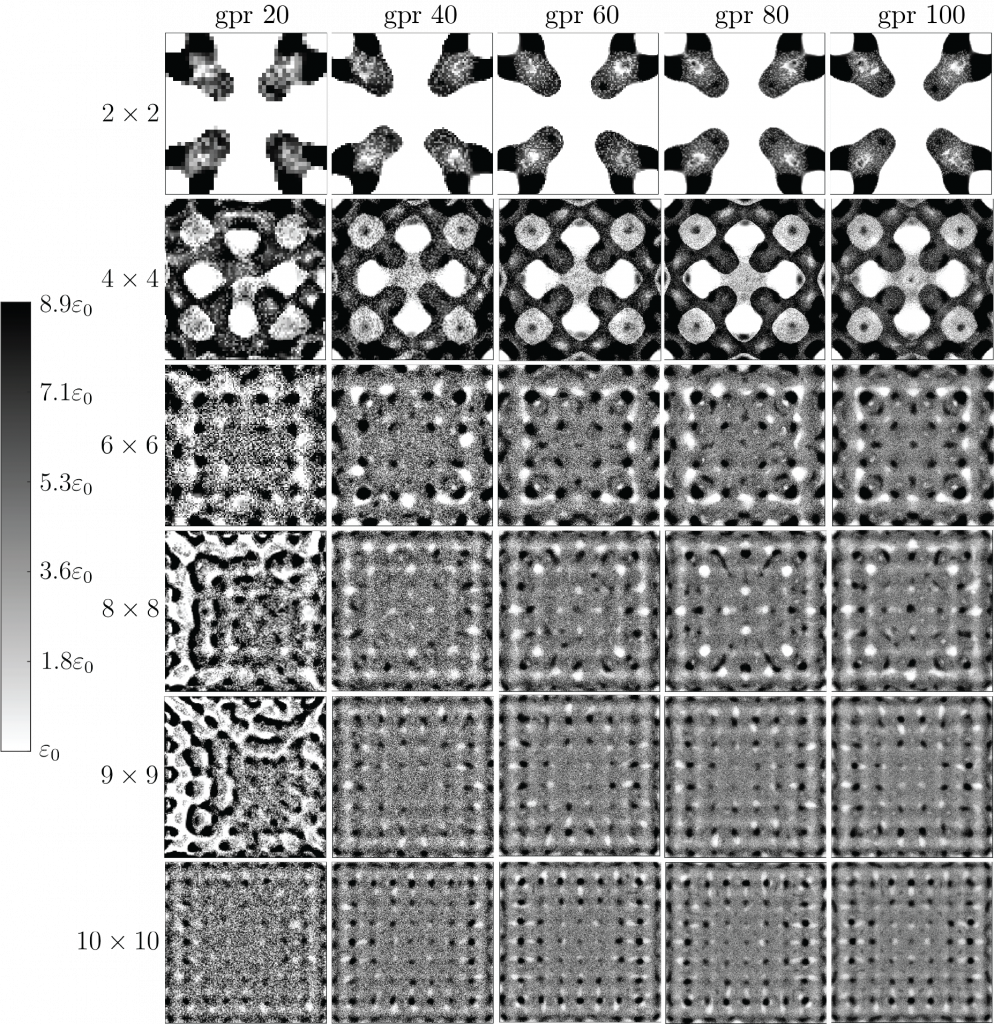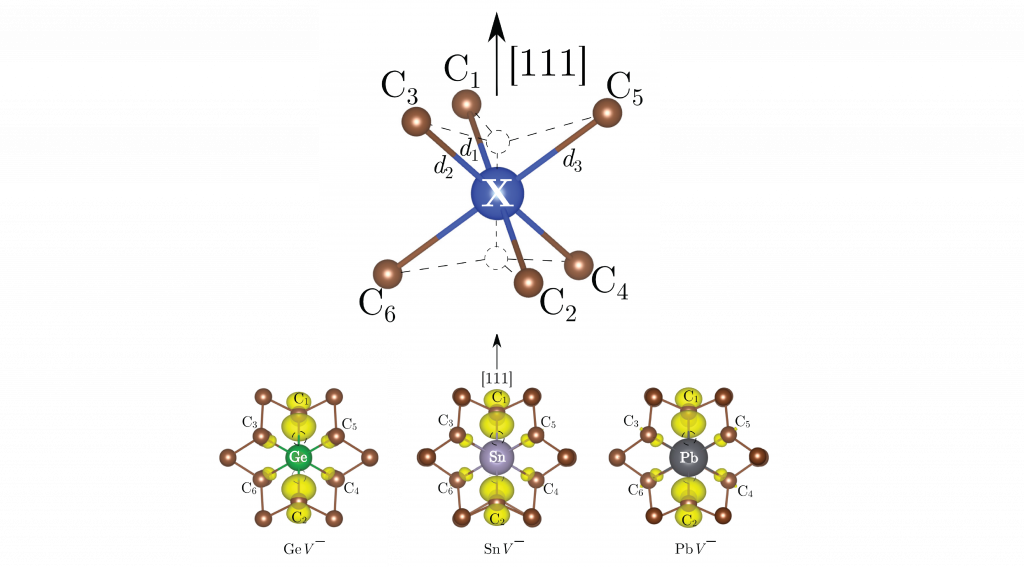Our research program focuses on the quantum theory of solids, computational electronic structure methods, point defects in semiconductors, and inverse design for large-scale photonic optimization with the ultimate goal of engineering better devices

Research Area 1: Applications of the NV center in diamond as a quantum memory and in quantum sensing
We showed that over 97% of the electric field measured by NV-center spins can be attributed to the nitrogen donors that induce the ionization of NV centers if the NV centers are deep within the bulk of a given diamond sample. We achieved this result by applying the concept of a local Fermi level (a local electronic chemical potential), which we formally define through charge-state transition levels. Our work points to the need to account for this dominant source of noise in electric-field measurements.

Research Area 2: Designing photonic crystals for telecommunications applications
We demonstrated that once a required supercell size had been attained and for sufficiently many frequencies sampled within the photonic bandgap, employing the density of photonic states evaluated in a manner analogous to gamma-point integration as the optimization objective to minimize leads to photonic crystal structures. We have also implemented a full Brillouin zone formalism that inherently encourages binarized designs even in gradient descent. Our approach uses a uniform source in the place of the standard Dirac delta function sources and is capable of treating frequency-dependent optical response.

Research Area 3: Magneto-optical characterization of point defects
We illustrated how the anisotropic distribution of the strengths of the hyperfine constants for heavy group-IV impurity-vacancy centers at the location of neighboring carbon-13 nuclei could be leveraged to enhance the electronic spin coherence of the group-IV centers.